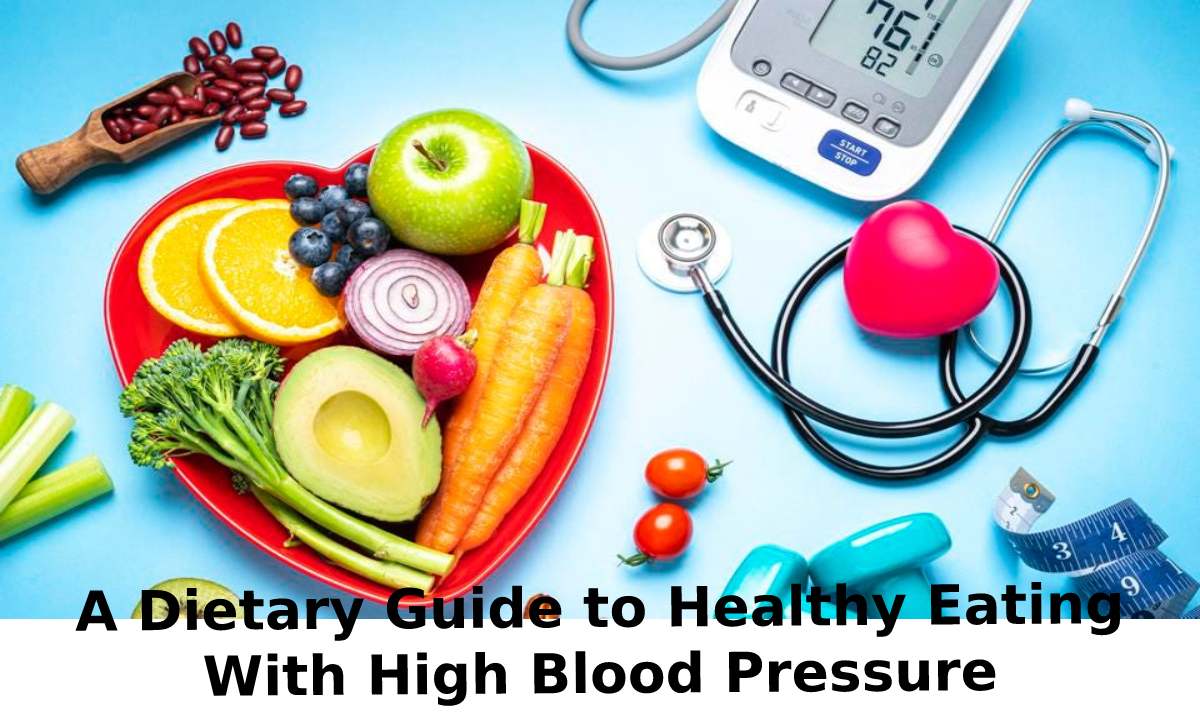
Guide to Healthy Eating With High Blood Pressure
Hypertension is one of the most common chronic ailments. According to the Centers for Disease Control and Prevention, it affects nearly half of the American population.
Hypertension is characterized by a systolic blood pressure level of 130 mmHg or higher and a diastolic blood pressure level of 80 or higher.
Early symptoms of hypertension, such as flushing and dizziness, often go unnoticed. That is why many patients don’t seek medical care in the initial stages.
However, if left untreated, hypertension can cause catastrophic damage to the heart, brain and kidneys. Also, it increases the likelihood of heart attacks and strokes.
The good news is that patients can use a wide array of hypertension treatments to keep their blood sugar levels in check. Apart from medications, lifestyle changes, such as exercise and medication, play an important role in treating hypertension.
Additionally, a balanced and nutritious diet is crucial for lowering blood pressure. But when it comes to healthy eating, patients are often overwhelmed by a plethora of social media trends and fad diets.
This blog will outline a few dietary changes that are useful for managing hypertension. But let us first delve deeper into the condition and available hypertension treatments.
Table of Contents
Hypertension: Causes, Risk Factors and Types
Hypertension is caused by the narrowing of blood vessels (arteries) and increased resistance to blood flow. A high blood pressure reading indicates that blood is forcefully pushing through the arteries.
Hypertension causes the heart to work harder to pump blood into the arteries. That, in turn, results in the weakening of cardiac muscles.
Consistently elevated blood pressure levels increase an individual’s risk of developing cardiovascular diseases, such as:
- Heart failure
- Arrhythmia
- Coronary artery disease
- Heart attack
Apart from the heart, hypertension also affects other organs, particularly the brain. It increases an individual’s predisposition to transient ischemic attacks (TIAs) and strokes.
Typical risk factors of hypertension include:
- A family history of hypertension and heart disease
- Smoking
- Alcohol consumption
- Old age
- Obesity
- Decreased physical activity
- Increased stress
Additionally, patients living with other chronic conditions, such as diabetes, can also cause hypertension.
Depending on the underlying cause, hypertension can be classified as:
- Primary or essential hypertension
- Secondary hypertension
Primary hypertension gradually develops over years or months due to the narrowing of the arteries. On the other hand, secondary hypertension results from an underlying disorder, such as kidney ailments, congenital heart defects, obstructive sleep apnea, etc.
Unlike primary hypertension, the secondary kind results in a sudden spike in blood pressure levels. That makes it more dangerous.
Hypertension Treatments: A Closer Look
Traditional treatment options for hypertension include medications, such as:
- Beta-blockers
- ACE inhibitors
- Calcium channel blockers
- Blood thinners
- Statins
For secondary hypertension, the treatment plan focuses on managing/curing the underlying condition. Apart from traditional hypertension treatments, daily exercise, yoga, meditation and weight loss also help regulate blood pressure levels.
Healthy Eating Tips for Hypertension
While medications are important for controlling elevated blood pressure, they can only do so much. An individual’s eating habits also play an important role in promoting heart health and keeping their blood pressure levels in check.
Junk and processed foods are often loaded with preservatives (nitrates), refined sugar, sodium and trans fats. These ingredients are known for their adverse effects, including weight gain and high cholesterol levels.
Long-term intake of such foods could cause plaque buildup in the arteries, ultimately leading to hypertension and cardiovascular diseases.
That makes it extremely important for patients to pay attention to their diet.
Eat More Fruits and Vegetables
Fruits and vegetables are excellent sources of antioxidants, vitamins and minerals, such as potassium and magnesium. Also, many of them are loaded with fiber and are low in sodium. That makes fruits and vegetables, such as green beans, broccoli, spinach, tomatoes, strawberries, grapes, apples, etc., crucial for regulating blood pressure.
Patients are advised to increase their fresh fruit and vegetable intake by including multiple servings in each meal. Apart from the main meals, it is also a good idea to replace regular snacks with fruits.
Also, patients should exercise caution while consuming frozen vegetables and canned fruits. These foods might contain harmful ingredients, such as nitrates, refined sugar and salt.
Avoid Refined Sugar
Candies, cakes, chocolate bars and ice creams are great for the occasional indulgence. However, excessive consumption of these foods can lead to weight gain and elevated cholesterol levels. That, in turn, increases the risk of hypertension.
Therefore, patients are advised to eliminate all sources of refined sugar from their diet. Natural sugars, such as those found in molasses, jaggery and fruits, won’t cause any harm.
Increase Intake of Whole Grains
Whole grains, such as buckwheat, barley, oatmeal and brown rice, are packed with nutrients, such as vitamins, antioxidants and proteins. Also, they’re rich in trace minerals, such as potassium, magnesium and selenium.
Whole grains are known to reduce the risk of heart disease and type 2 diabetes. That’s why patients are advised to include a few servings of different whole grains in their diet.
Reduce Sodium Intake
High sodium intake is one of the most common causes of hypertension. Patients are advised to avoid packaged foods, such as wafers, cured meats, cold cuts, canned fish and caviar.
Also, it is important for patients to eat fresh, home cooked food. If they are eating out, patients should inquire about the sodium content of different food items.
Increase Consumption of Fish and Poultry
Both fish and poultry are rich sources of protein. They energize the body and promote muscle growth without any of the harmful effects of red meat.
Additionally, fish is an excellent source of omega 3 fatty acids, known to improve heart health.
Other Ingredients to Include
Legumes, nuts and seeds are loaded with vital nutrients that help regulate blood pressure and cholesterol. Also, they keep blood sugar levels in check. Patients are advised to include these ingredients in their diet as well.
In Conclusion
With the right hypertension treatments and lifestyle changes, patients can continue to live long and healthy lives. It is important to understand the role of a healthy diet as well. Patients are advised to consult a medical professional or nutrition expert to outline a diet plan. Make sure it includes a mix of fresh produce, whole grains, seeds, nuts, legumes, fish and poultry.



